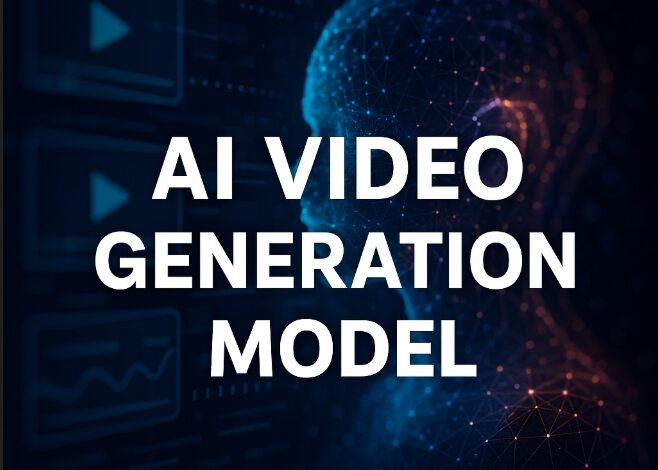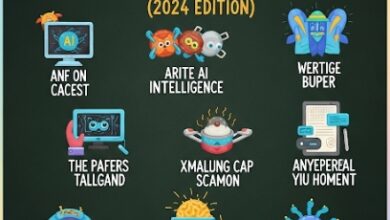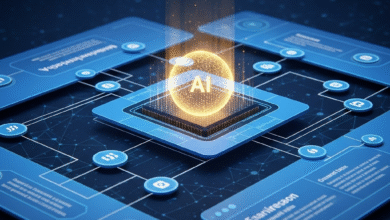AI Video Generation Model
AI Video Generation Model : Transforming International Education and University Experiences

AI Video Generation Model : Transforming International Education and University Experiences
In the evolving landscape of international education, technology continues to reshape how universities engage with students globally. One of the most exciting innovations currently making waves is the AI video generation model. If you’re searching for ways universities are enhancing their outreach and educational delivery, understanding the role of an AI video generation model can offer valuable insights.
This article explores what an AI video generation model is, how it impacts universities worldwide, and why it matters for prospective students who rely on Google ratings and user reviews to choose the best institution.
What is an AI Video Generation Model?
An AI video generation model refers to a sophisticated artificial intelligence system capable of creating video content automatically. Unlike traditional video production, which requires cameras, crews, and editing, AI video generation models use deep learning algorithms and large datasets to generate video from simple inputs like text, audio, or images.
These models can create highly realistic videos, including animations, virtual avatars, and even personalized messages. For universities focusing on international education, this technology opens up new possibilities for content creation, marketing, and student engagement.
How the AI Video Generation Model Benefits Universities
Universities are adopting the AI video generation model to transform their communication and educational offerings. Below are key benefits that make this technology indispensable:
1. Personalized Marketing and Recruitment
Recruiting international students is a competitive process. Prospective students often turn to Google and rely heavily on ratings and reviews before applying. Using an AI video generation model, universities can produce personalized video content that speaks directly to the interests and backgrounds of different student groups.
Imagine a video that introduces campus life, academic programs, and student testimonials in a language and style tailored to each viewer. This personal touch enhances engagement, increases application rates, and ultimately boosts a university’s reputation on platforms where user reviews matter.
2. Innovative Learning Materials
Traditional lectures can sometimes fail to capture diverse learning styles. With an AI video generation model, universities can convert lectures, research papers, and course materials into dynamic videos that make complex subjects easier to understand.
For example, an AI video generation model can turn dense text into animated visuals or create a virtual professor explaining concepts with clarity and enthusiasm. This not only improves learning outcomes but also attracts positive feedback from students, reflected in higher Google ratings and reviews.
3. Virtual Campus Experiences
Travel restrictions and distance can deter many international students from visiting campuses. Universities use the AI video generation model to create virtual tours that allow students to explore facilities, dorms, and social spaces interactively.
These AI-generated virtual tours can be integrated with chatbots or AI avatars that answer common questions, making the experience even more immersive and personalized. Such advanced tools enhance a university’s online presence and can positively influence prospective students’ decisions.
SEO Impact of AI Video Generation Model on University Searches
When prospective students search for universities, Google rankings and user reviews play a pivotal role in decision-making. Integrating AI-generated videos into university websites and social media helps improve SEO performance by:
-
Increasing dwell time as visitors spend more time watching engaging videos.
-
Reducing bounce rates by providing clear, interactive content that answers visitor queries.
-
Improving keyword relevance, especially for phrases like “AI video generation model” when describing cutting-edge technology use.
Universities leveraging the AI video generation model often see better organic rankings due to richer content that satisfies search intent and enhances user experience, both critical factors in Google’s algorithm.
Examples of AI Video Generation Model Applications in Universities
Several universities around the world have already embraced AI video generation technology:
-
Virtual Orientation Videos: Instead of static PDFs, universities use AI to create welcoming video guides for new international students, explaining campus life, academic policies, and student services.
-
Multilingual Content Production: AI video generation models produce content in various languages quickly, allowing universities to reach wider audiences.
-
Research Presentations: Faculty members turn research summaries into shareable videos, making their work more accessible to students and the public.
These applications showcase the versatility and impact of the AI video generation model in enhancing the educational environment.
Choosing the Right AI Video Generation Model for Universities
Not all AI video generation models are created equal. Universities should consider these factors when selecting a tool:
-
Customization: The ability to create videos tailored to specific student demographics or courses.
-
Language Support: For international education, multilingual capabilities are essential.
-
Ease of Use: Platforms with user-friendly interfaces allow educators and marketers to produce videos without technical expertise.
-
Integration: Compatibility with existing university systems like LMS (Learning Management Systems) and CRM (Customer Relationship Management).
Popular platforms include Synthesia, Pictory, and Lumen5, each offering unique features suitable for various university needs.
Future Trends: AI Video Generation Model and International Education
Looking ahead, the AI video generation model will continue to evolve and become more integral to international education:
-
Interactive AI Videos: Future models may allow real-time interaction, letting students ask questions and receive answers within the video.
-
Augmented Reality (AR) Integration: Combining AI videos with AR could create mixed reality experiences, enriching virtual campus tours or lab simulations.
-
Deeper Personalization: AI will tailor educational videos based not only on demographics but also on individual learning behaviors and preferences.
Universities embracing these trends will lead the way in attracting and retaining international students, setting themselves apart in global rankings and user satisfaction.
Conclusion
The AI video generation model is more than just a tech buzzword—it’s a transformative tool that universities worldwide are using to enhance international education. From personalized recruitment videos to dynamic learning materials and immersive virtual experiences, AI-generated video content improves student engagement, satisfaction, and ultimately university reputation.
For students searching for universities with a forward-thinking approach and strong Google ratings, institutions leveraging AI video generation models stand out as leaders in innovation and accessibility.
If you are exploring universities or working within educational institutions, understanding and adopting AI video generation models can unlock new opportunities and shape the future of global education.





